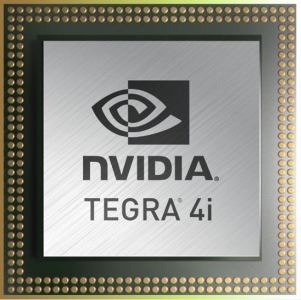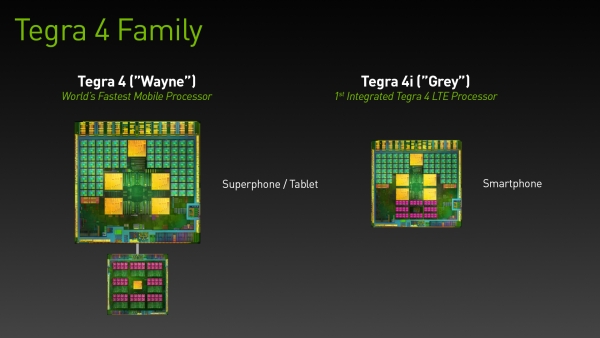It turns out that Nvidia CEO Jen-Hsun Huang told investors that when it comes to future Tegra products, Nvidia is going after higher-end devices where visual computing and graphics performance play a major role.
This is a course change for the company. Nvidia tried to enter a new market with the Tegra 4i, which targets mainstream devices such as $199 smartphones. Tegra 4i is finally out and it has two design wins so far, the LG G2 Mini in Latin America and the Wiko Wax in Europe.
Tegra 4i does not fit into Nvidia's high-end focus
We asked Deepu Talla, the GM of Nvidia's Tegra business unit about the potential successor to the fledgling Tegra 4i and the only answer we got was that Nvidia told to its investors that it wants to go after the high-end. It is starting to look like there won’t be a successor at all, but Nvidia is not saying anything. It is worth noting that the Tegra 4i was officially launched in February 2013, thirteen months ago, and we have yet to hear a single remotely credible rumour about its potential successor, let alone anything official.
The mainstream SoC market is getting really crowded and if you plan to enter it you have to learn to live with very tight margins. That is the only way to compete with MediaTek, Qualcomm, Rockchip and other players in this hotly contested segment.
In all likelihood, this strategic shift means that this is the end of the road for Tegra chips with an "i" suffix. What's more, Nvidia does not have a vast product portfolio like Qualcomm or MediaTek, so it can't just cook up a new SoC using off-the-shelf components.
Nvidia's core conundrum
Nvidia currently produces Tegra chips based on ARM's Cortex A9r4 and A15 cores. In a few months it will add Denver 64-bit cores to the mix, but none of them really work for a hypothetical Tegra 5i. The A15s are still too big for mainstream products, a Denver dual-core does not make much sense, either. The A9r4 is already outdated and ARM is replacing it with the Cortex A12 and Cortex A17.

In essence Nvidia would practically have to license one of these new cores for a single product, while the product itself would launch months after MediaTek and the rest of the competition introduce their first A12- and A17-based parts. ARM does not have any 64-bit mainstream parts yet, at least not officially, and neither the Cortex A53 nor Cortex A57 would be a good fit for such a chip. Nvidia never dabbled in Big.LITTLE, nor does it produce compatible cores at the moment. Only the A15 supports big.LITTLE, Denver and the venerable A9r4 do not.
No word on future LTE integration yet
We don’t think that the Tegra K1 64-bit Denver chip is a mainstream product by any stretch of the imagination. We do not expect it to get an on-die modem at one point, either. Maybe that is the future, but not won't happen in the K1 generation, although Nvidia declines to comment.
Based on information that we gathered from many people we met at GTC 2014, it is highly unlikely that we will be seeing a successor to the LTE-loving Tegra 4i and Nvidia also declined to comment on possible plans to include an LTE modem on upcoming big SoC designs, such as the Erista chip, scheduled for 2015.




